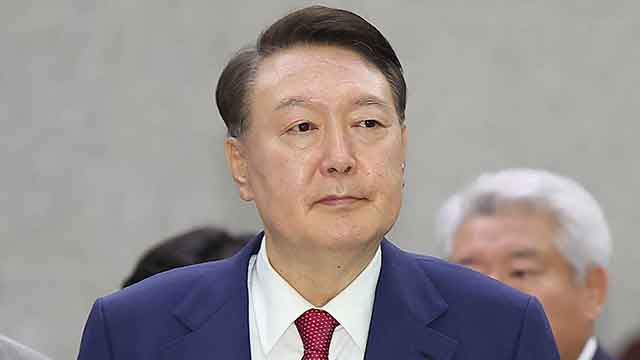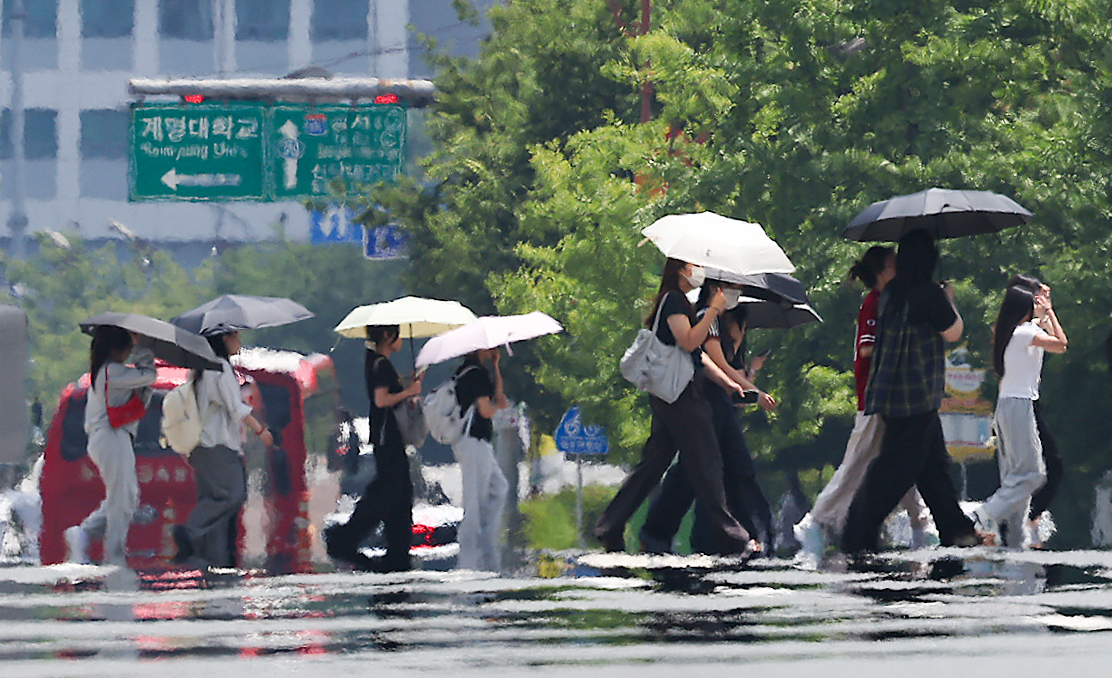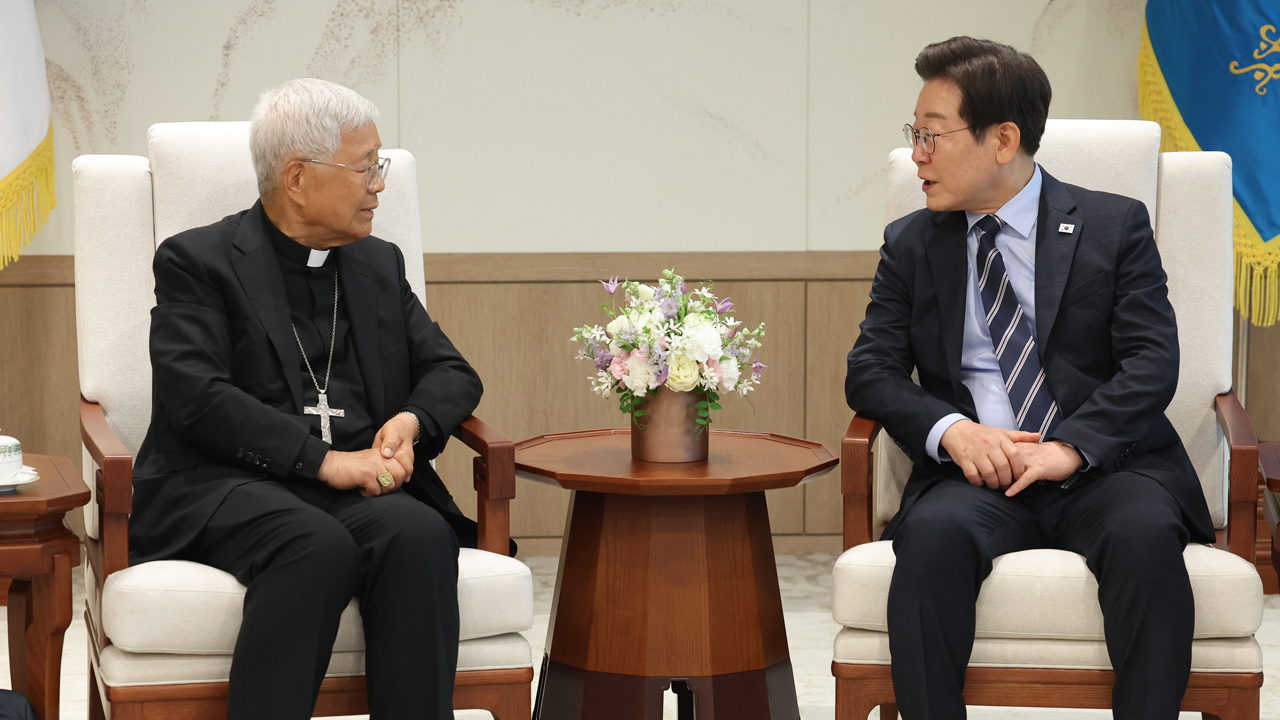[News Today] LOCALIZER MOUNDS TO BE REMOVED
입력 2025.01.23 (16:36)
수정 2025.01.23 (16:37)
읽어주기 기능은 크롬기반의
브라우저에서만 사용하실 수 있습니다.
[LEAD]
Following the Jeju Airline tragedy, it's been revealed that nine localizers made of concrete are at seven national airports, including Muan. The Ministry of Land, Infrastructure, and Transport has now rolled out a fix. Removing these mounds altogether or soften them with soil, making them less rigid.
[REPORT]
The Jeju Air aircraft had crashed into a localizer at Muan International Airport.
The localizer was propped up on a dozen concrete pillars underneath the mound. During the betterment in 2023, a 30-centimeter-thick concrete platform was placed over it, creating a mound that reached two meters in height.
The Ministry of Land, Infrastructure and Transport decided to remove similar mounds that have come into question.
Instead, easily breakable lightweight steel frames will be erected to support the localizers.
Yeosu Airport, which has a localizer mound twice as high as that at Muan, will revamp its localizers the same way.
Four airports, including the ones in Gwangju and Pohang Gyeongju where the mounds are less than one meter high, plan to bury the localizers underground instead of removing the mounds.
The plan involves covering the mound with piles of soil to make the surface slope gently and lessen the impact in case an aircraft crashes into it.
Kim Hong-rak / Airport policy administrator, Transport Ministry
The platform of the localizers should be placed underground and even if
inevitable, should not protrude more than 7.5cm above the surface.
The safety zone at the end of the runway is to span up to 240 meters.
There are seven airports nationwide, including Muan, Yeosu, and Gimhae, that need such improvements.
The introduction of engineered materials arresting systems known as EMAS will be examined for smaller airports where safety zone extension is not feasible.
EMAS is an aviation safety system that helps an aircraft decelerate when it overruns a runway.
Prof. Hwang Ho-won / Korea Aerospace Univ.
Before setting up the EMAS, the runways should be made even. That has never
been done in Korea, so the project needs to be examined thoroughly and
will take time.
The transport ministry plans to complete the reconstruction in the first half of this year, but they have yet to fix the budget size or funding source, not to mention a plan to purchase more land to extend the safety zone.
■ 제보하기
▷ 카카오톡 : 'KBS제보' 검색, 채널 추가
▷ 전화 : 02-781-1234, 4444
▷ 이메일 : kbs1234@kbs.co.kr
▷ 유튜브, 네이버, 카카오에서도 KBS뉴스를 구독해주세요!
- [News Today] LOCALIZER MOUNDS TO BE REMOVED
-
- 입력 2025-01-23 16:36:11
- 수정2025-01-23 16:37:20
[LEAD]
Following the Jeju Airline tragedy, it's been revealed that nine localizers made of concrete are at seven national airports, including Muan. The Ministry of Land, Infrastructure, and Transport has now rolled out a fix. Removing these mounds altogether or soften them with soil, making them less rigid.
[REPORT]
The Jeju Air aircraft had crashed into a localizer at Muan International Airport.
The localizer was propped up on a dozen concrete pillars underneath the mound. During the betterment in 2023, a 30-centimeter-thick concrete platform was placed over it, creating a mound that reached two meters in height.
The Ministry of Land, Infrastructure and Transport decided to remove similar mounds that have come into question.
Instead, easily breakable lightweight steel frames will be erected to support the localizers.
Yeosu Airport, which has a localizer mound twice as high as that at Muan, will revamp its localizers the same way.
Four airports, including the ones in Gwangju and Pohang Gyeongju where the mounds are less than one meter high, plan to bury the localizers underground instead of removing the mounds.
The plan involves covering the mound with piles of soil to make the surface slope gently and lessen the impact in case an aircraft crashes into it.
Kim Hong-rak / Airport policy administrator, Transport Ministry
The platform of the localizers should be placed underground and even if
inevitable, should not protrude more than 7.5cm above the surface.
The safety zone at the end of the runway is to span up to 240 meters.
There are seven airports nationwide, including Muan, Yeosu, and Gimhae, that need such improvements.
The introduction of engineered materials arresting systems known as EMAS will be examined for smaller airports where safety zone extension is not feasible.
EMAS is an aviation safety system that helps an aircraft decelerate when it overruns a runway.
Prof. Hwang Ho-won / Korea Aerospace Univ.
Before setting up the EMAS, the runways should be made even. That has never
been done in Korea, so the project needs to be examined thoroughly and
will take time.
The transport ministry plans to complete the reconstruction in the first half of this year, but they have yet to fix the budget size or funding source, not to mention a plan to purchase more land to extend the safety zone.
이 기사가 좋으셨다면
-
좋아요
0
-
응원해요
0
-
후속 원해요
0










![[속보] 방송 3법, 민주당 주도로 국회 과방위 전체회의 통과](/data/layer/904/2025/07/20250707_VN0WPW.jpg)




이 기사에 대한 의견을 남겨주세요.